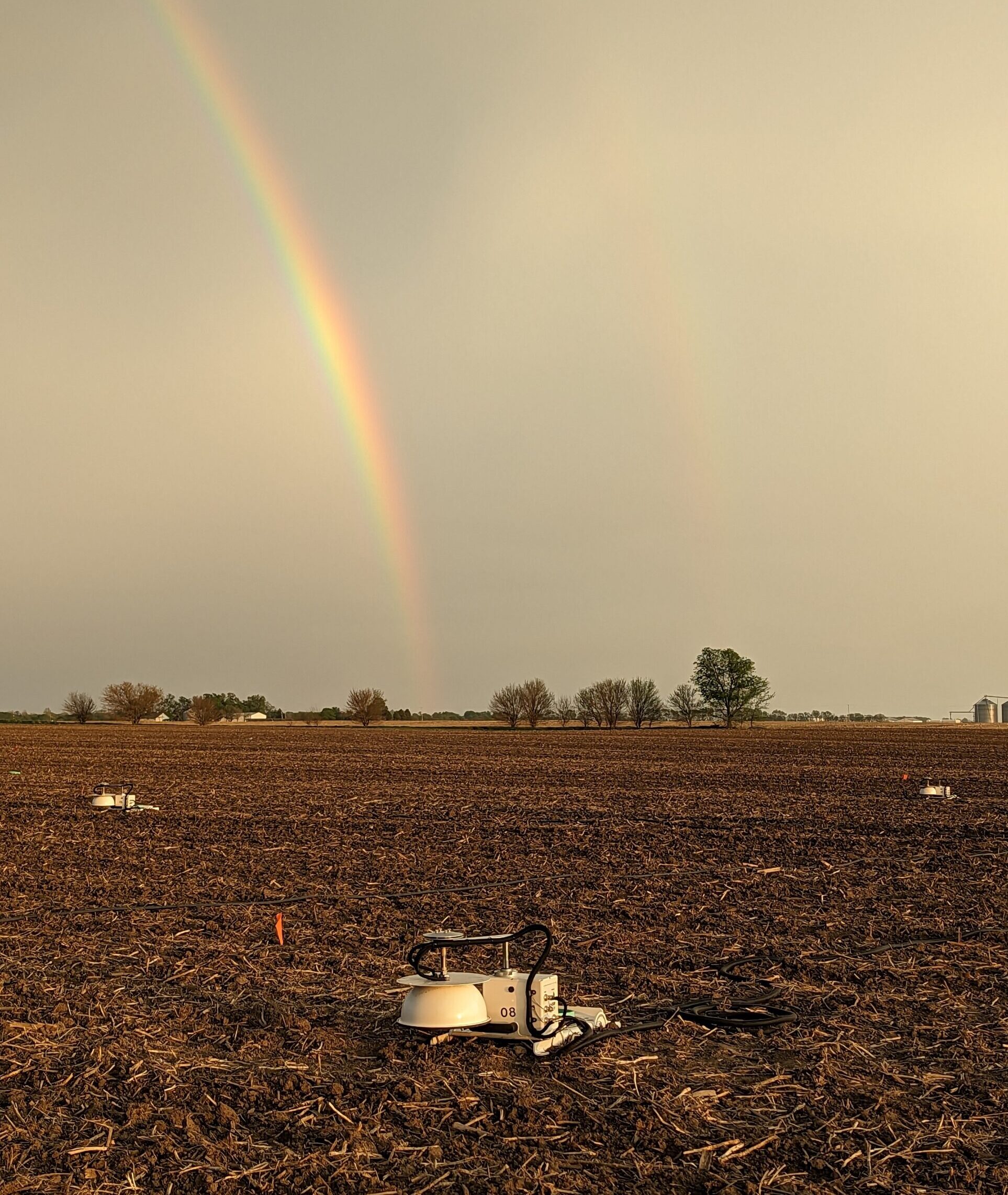
A rainbow rises over three autochambers collecting data in a Central Illinois field. This data informed the creation of the new conceptual “cannon model.” Photo Credit: Will Eddy
Nitrous oxide (N2O) has long been agriculture’s sustainability Achilles heel. While only making up 6% of U.S. greenhouse gas (GHG) emissions, N2O has 300 times the heat-trapping ability ofcarbon dioxide (CO2) and stays in the atmosphere for about 100 years.
This greenhouse gas is produced by soil microbes whose activity depends on highly variable soil conditions. This variability makes it difficult to accurately measure annual N2O emissions at the field scale, complicating scientists’ ability to reduce those emissions using climate-smart agricultural practices.
“N2O emissions are notoriously variable in both time and space,” said Wendy Yang, Professor of Plant Biology at the University of Illinois Urbana-Champaign. “If you measure emissions today and you go back out to the field tomorrow, you could get something very, very different. If you take a measurement in one spot then take three steps to the right, you could get very different results
Yang, Associate Director of the Agroecosystem Sustainability Center (ASC) in the Institute for Sustainability, Energy, and Environment (iSEE) at Illinois, co-authored a recent paper published in Communications Earth and Environment addressing this very issue.
The study proposed the first conceptual model — the “cannon model” — that explains N2O’s extreme spatial variationswithin agricultural fields that appear to have quite homogenous soil conditions. It is one of the latest papers from SMARTFARM Phase II, an ASC project supported by the U.S. Department of Energy’s Advanced Research Projects Agency-Energy (ARPA-E) program that developed an innovative system-of-systems modeling approach to monitoring, reporting, and verification(MRV) of greenhouse gas emissions.